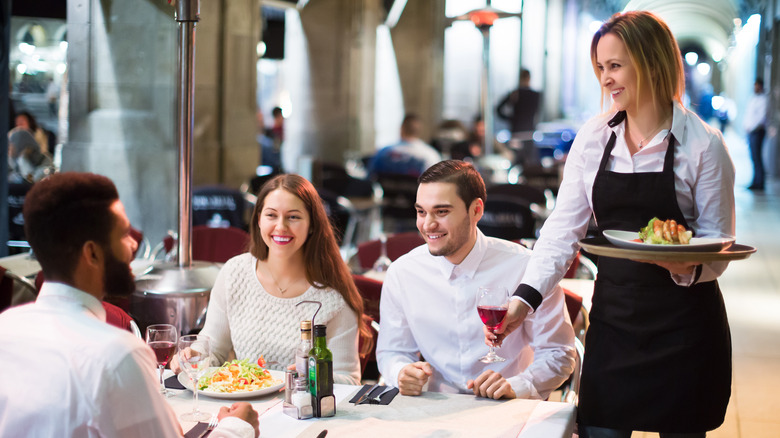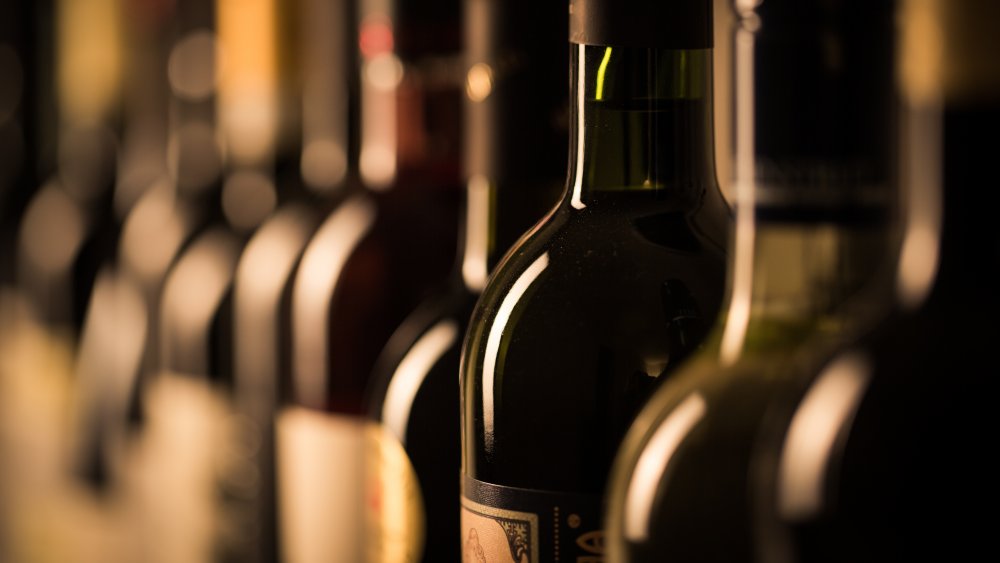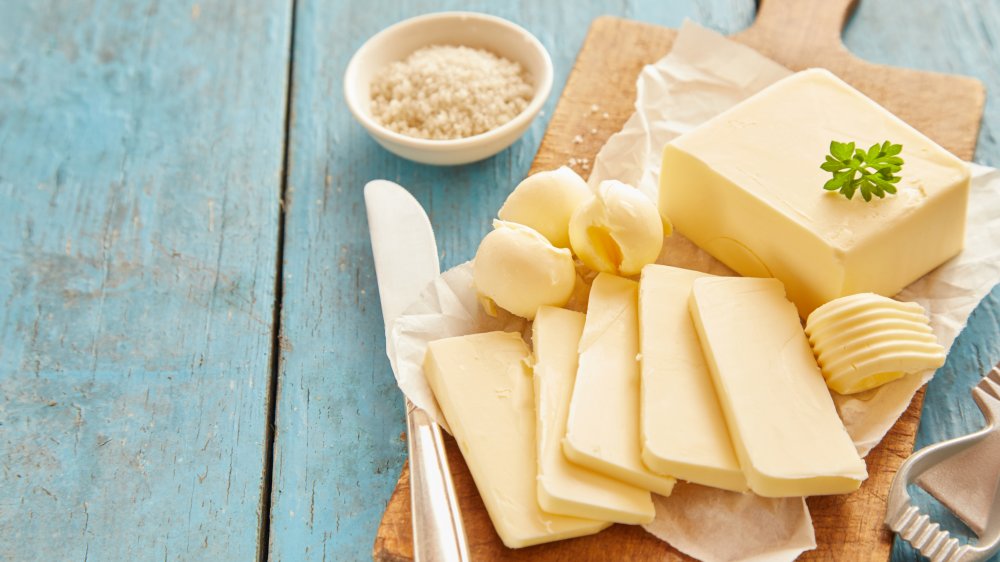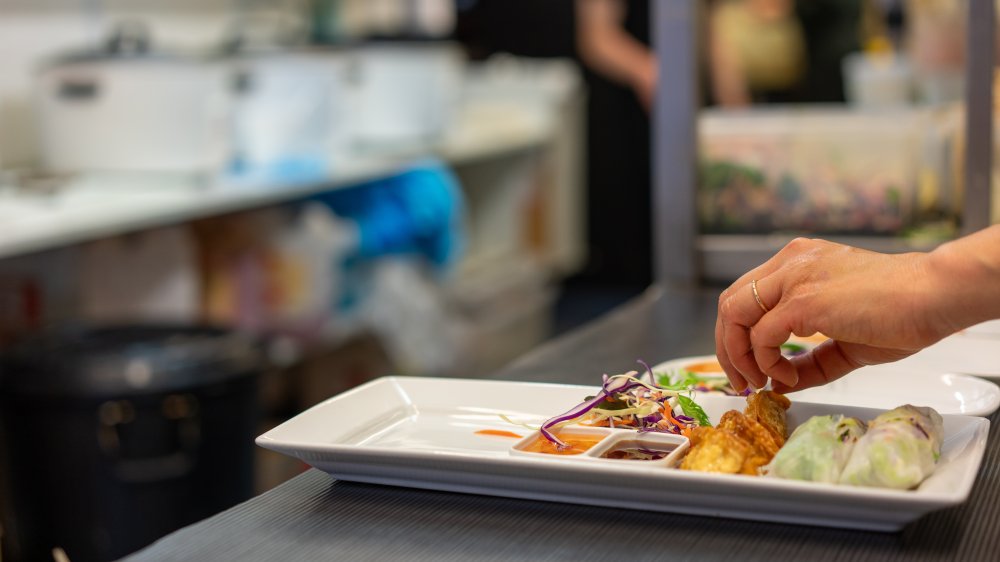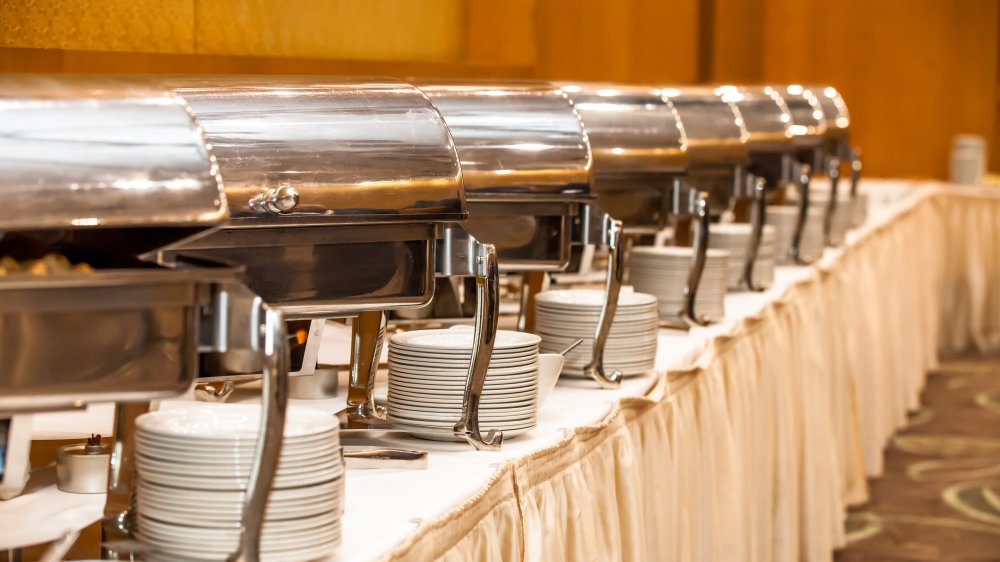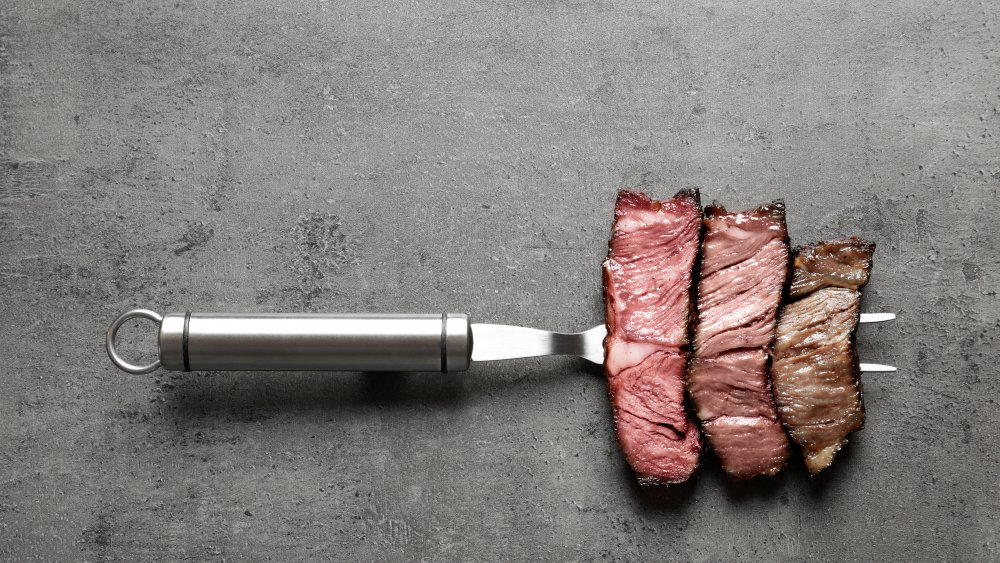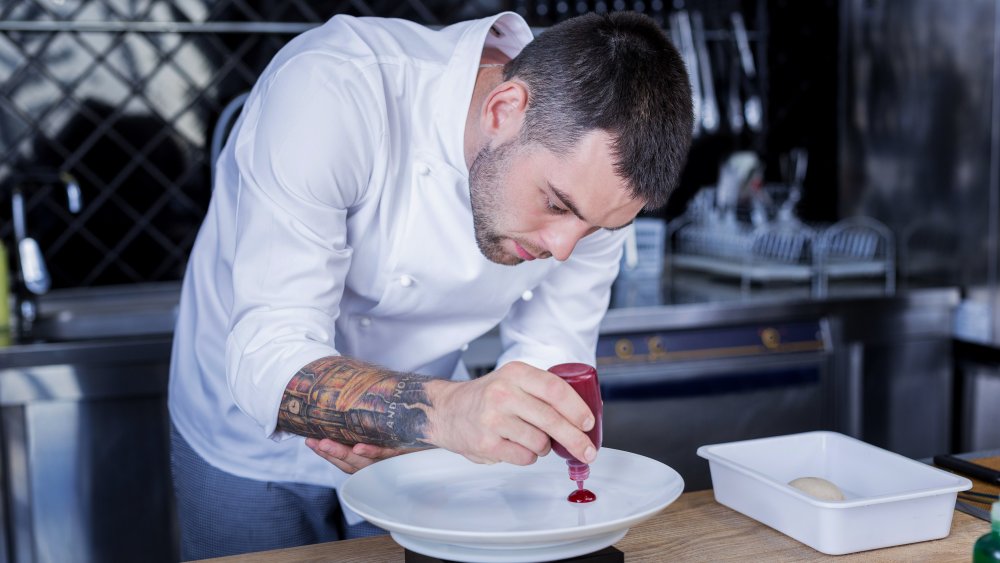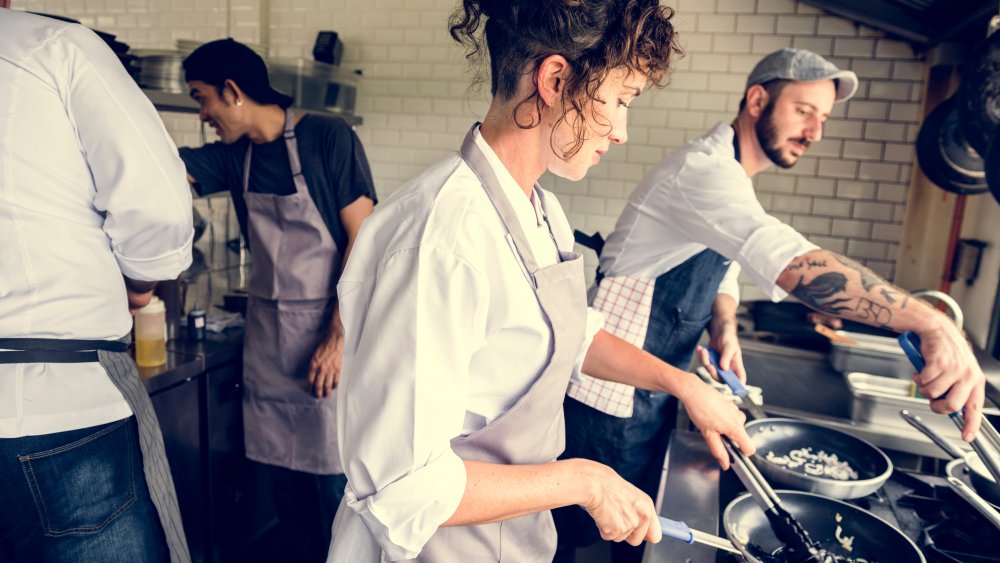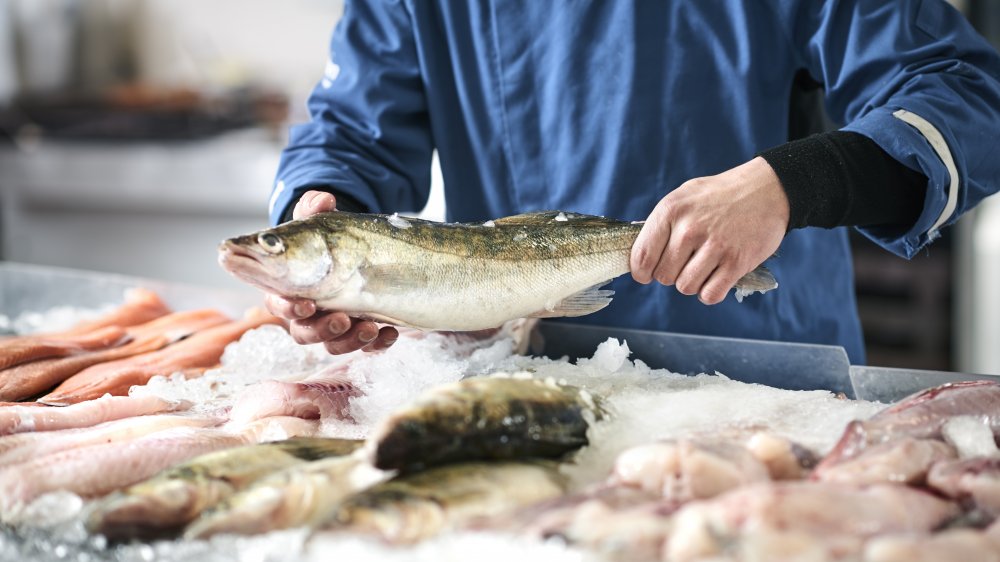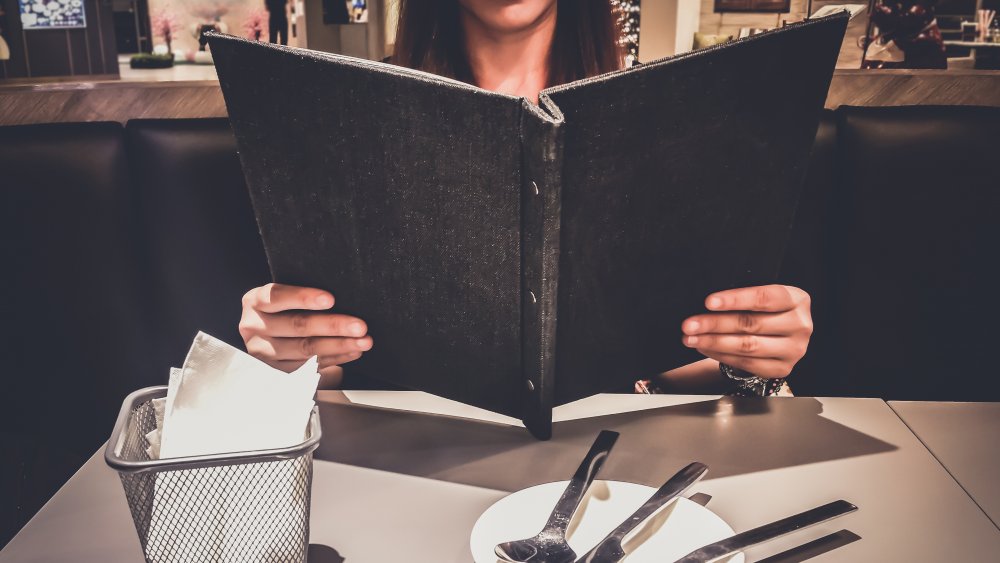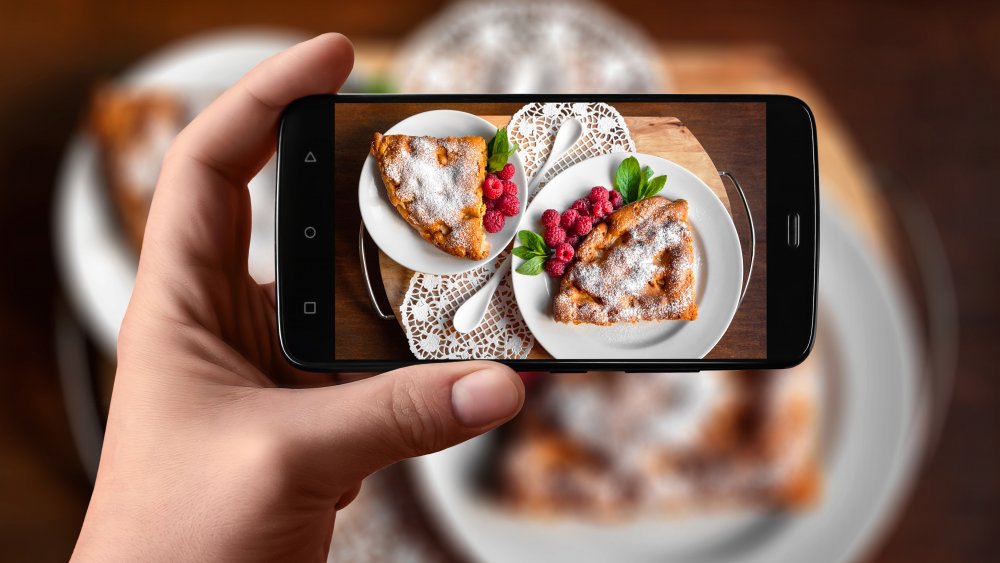Secrets Fine Dining Restaurants Don't Want You To Know
Any fine dining restaurant worth its salt knows how to do one thing really well: Hide the organized chaos that's going on behind the scenes. When you walk in, you'll find a neatly decorated dining room, finely polished silver, and well-dressed staff walking confidently from table to table. Unless you've worked in a restaurant, you probably have no idea that, behind the scenes, the cooks in the back of the house are rushing around, shouting to each other to coordinate ticket times and ensure everyone knows about the special requests listed on the latest ticket. The light and breezy music of the dining room fades away, replaced by the sound of knives clinking against cutting boards and flames sizzling on the grill.
Restaurant managers want you to stay in the present and enjoy the dining experience — they don't want you to know about the things that go on behind the scenes. But you might be surprised to learn that these things are happening away from prying eyes, even in the fanciest restaurants. We've gathered the biggest restaurant secrets from industry experts, so read on to find out what happens behind the scenes at your favorite fine dining restaurant. You might wish you hadn't read some of them!
You may want to skip the specials
When you visit a fine dining restaurant, one of the first things the server asks you is if you want to hear about today's specials. Some restaurants even write them up on the chalkboard in front of the storefront, so you'll know about today's concoction before you even walk in the door. It sounds like a great way for a restaurant to keep its customers from getting bored with the regular menu, right?
It's true that some chefs use specials as a way to utilize seasonal or rare ingredients, and some specials are experiments to see if the dish is popular enough for the regular menu (according to the Food Network). But, unfortunately, many restaurants use specials as a way to use up surplus ingredients that may be close to expiring. Restaurant critic Andrew Knowlton told Dr. Oz that seeing an item (like mussels) on the regular menu and also spotting it on the specials list is a red flag. The chef likely ordered too much product, and the restaurant is hoping to push through it before it goes bad.
You should order their cheapest wine
It's more common than you'd think for patrons to order the second-cheapest bottle on the wine list. Atlas Obscura describes this as a phenomenon that happens to people who are unsure about the difference between wines, and it occurs to over half their surveyed diners. Not wanting to seem cheap, people don't order the least expensive wine on the list, opting for the second-cheapest option instead. But, is it actually the best strategy? Not necessarily.
Restaurant owners and bar managers have taken note of customer's buying habits, and they've started to price their wines accordingly. The Independent revealed that the second-cheapest bottle often has the highest markup, and it's usually less expensive than the cheapest bottle on the list. Sommelier Mark Oldman confirmed this fact, telling Business Insider that the second-cheapest bottle of wine is often the worst value on the list.
Our advice: You're better off forgetting about the mind games, sucking up your pride, and just ordering the cheapest bottle — the bottle you actually want. Better yet, ask your server for advice, and you might be surprised by receiving a great recommendation.
None of the wines on the wine list are a good deal
It's no surprise that restaurants mark up the price of food and beverages to make a profit, but the wine list features some of the steepest markups on the menu. Many of the less expensive wines on the list are priced five or six times as much as their retail price, and even the higher-priced wines that are only doubled in price can get pretty expensive. Considering that you'll likely pay a 20 percent tip on top of that marked-up wine, buying wines by the bottle can really add up when you get your bill. Not that wines by the glass are a much better deal; restaurant sommeliers told Serious Eats that wines by the glass are often priced higher per pour than the bottle deals.
If you really want to get ripped off, reach for the restaurant's reserve wine list. Former MasterChef host and successful restaurateur, Joe Bastianich, told The Wall Street Journal that these lists contain particularly bad deals. Restaurant owners know that wealthy diners seek out exclusive features, so they create a list of so-called special wines to trick them into believing they're receiving an exclusive offering. Available at exorbitant prices, of course.
The food contains a ton of butter
Have you ever tried to replicate a restaurant favorite at home? You might find it challenging to achieve the same level of richness and flavor unless you add more butter and salt than you think is necessary.
In 2001, Anthony Bourdain appeared on The Oprah Winfrey Show and spilled the beans about how much butter goes into everything at a restaurant. "It is usually the first thing and the last thing in just about every pan," he told Oprah. According to what Bourdain told Oprah, it makes the food taste better, mellows out sauces, and gives food a classic sheen and emulsified consistency. By the time you leave a classic French restaurant, you might have consumed a stick (or more) of butter. Yikes!
It's not just about the butter, either. Restaurant food is filled with tons of salt, too. A study published in Appetite asked diners to reveal how much salt they thought was in their restaurant meal. The average guess was six times too low. Using salt enhances the flavor of normally bland food, like pasta, mashed potatoes, or soup. The sodium count rises even faster when a restaurant use salt-preserved foods like salami and smoked salmon. Even salad dressings can be pumped full of salt, so don't be disillusioned into thinking your restaurant meal is "healthy."
The cooks have touched everything you eat
If you worry about germs, you might not want to read this secret: Restaurant food has likely been touched several times before it makes its way to your dinner table. Metal utensils and tongs can damage delicate foods, and others believe that cooking with your hands creates a closer connection between the chef and the food. Today, every state has a different law about gloves and food preparation. While some states require gloves to be worn at all times, most states only require glove use with ready-to-eat food (food like salad greens, bread, or sliced tomatoes, anything that isn't cooked before it's consumed).
Unfortunately, it's not always better if the cooks were wearing gloves when they touched your food. A 2004 study in Food Safety Magazine found that glove wearers fail to notice tears or punctures in their gloves about 50 percent of the time. And an article in the Journal of Food Protection revealed that glove use may lead to worsened hygiene among glove wearers. Hand washing is the Food and Drug Administration's (FDA) recommended way of preventing the transmission of pathogens, but gloves provide a false sense of security, and wearers only wash their hands 27 percent of the time.
Most of the food is made in advance
Cooking in a restaurant kitchen is like performing a delicate dance. The chefs have to balance the cooking times of multiple items, all at once. A well-done grilled steak that takes 20 to 24 minutes might be paired with a steak that only takes 10 minutes to cook, or sauteed shrimp that finishes in only five minutes. How do they get everything timed out properly? Well, many of the side dishes and sauces are prepared in advance and reheated when you place your order.
Many items — like pasta sauces, mashed potatoes, roasted vegetables, or soups — are premade earlier in the day. Sometimes, this actually makes the food taste better because the flavors have had time to meld. But, sometimes, the food is made off-site and shipped frozen to the restaurant. Chain restaurants are famous for using this process, maintaining consistency by sending restaurants menu items that require little to no preparation. Even some independent restaurants use frozen or jarred sauces or items like pre-breaded chicken cutlets to cut down on prep time. Put it all together, and these premade items help speed up ticket times, getting the food to your table as quickly as possible.
The ingredients might not be as fancy as you think
A restaurant's menu descriptions are designed to elevate simple-sounding ingredients into a fancy, restaurant-worthy meal. Some menus go over the top, though, using phrases you might not recognize. Instead of dissuading customers from ordering unfamiliar food, these fancy terms actually end up doing exactly what chefs hope they will: Encouraging diners to experience something new.
Some of these terms describe cooking methods — en papillote is the French term for cooking fish in parchment paper, and a la plancha is Spanish for cooked on a griddle — but don't be fooled by the ones that describe ingredients. Just because a sandwich contains "harissa aioli" doesn't mean it was made from-scratch in house. It's very likely that spread is nothing more than regular mayonnaise mixed with hot pepper paste. Keep an eye out for these fancy-sounding ingredients: Au jus could be store-bought beef broth, and there's no way to know if the Chantilly cream on a dessert is actually Reddi-wip or Cool Whip.
You're not getting a high-quality piece of meat if you order a well-done steak
Lovers of well-done steaks, avert your eyes. You may not want to learn what we're about to reveal: When you order a well-done steak, you probably don't receive the same high-quality cut as the person who orders a medium-rare steak. Here's why. As meat cooks, the proteins begin to denature and break down. This process not only changes the color of the steak from red to brown to grey, but it also releases juices inside the steak as the meat shrinks in size. In the end, a steak that's cooked to well-done temperatures has released so many juices that it becomes dry and tough.
By the time a steak reaches a well-done temperature, it's impossible to tell that it was once a high-quality piece of meat. On Reddit, restaurant cooks admit that they save certain steaks for the well-done orders. They may be cut thinner than the rest of the steaks or butterflied open for quicker cooking times, or they may contain sinews that would taste chewy at lesser-done temperatures. Either way, it's a waste of money to cook overcook a nice steak, and the cooks aren't going to sacrifice a beautiful steak. Bottom line, save your money and cook a well-done steak at home with cheaper cuts from the grocery store.
The cooks aren't always culinary-school trained chefs
When you're paying top-dollar for a fancy restaurant meal, you probably expect to find a culinary-trained chef in the kitchen adorned in crisp chef whites and a tall hat. Unfortunately, that's not usually the case. In an interview with Woman's Day, the head chef of a New York City restaurant admitted that she — and most chefs — aren't usually cooking on the line during dinner service. The chef is there to teach the cooks, develop the recipes, and oversee the kitchen, but she's not necessarily going to cook your steak for dinner.
The cooks often don't go to culinary school, either. Many of the cooks worked their way up from being dishwashers or prep cooks. In fact, the Washington Post reports that there is a shortage of good cooks everywhere: Chicago, New York, Seattle, and San Francisco. Network shows create a glamorous view of what it is to be a restaurant chef, but the reality is long hours, hard work, and low pay in hot, cramped, sometimes dangerous working conditions. That doesn't always attract the culinary students to the low-ranking line cook jobs, who are looking for sous chef or higher-paying positions to pay back their massive student loan debt. So, many restaurants promote less-than-qualified employees from within and train them to be great cooks.
There's no such thing as a sick day
Most companies don't want you to come in if you're sick, but it doesn't always work that way at a restaurant. NPR reports about a 2015 survey, which revealed that 51 percent of food workers go into work when they're sick. Another 38 percent of respondents stated they "sometimes" go into work when sick. That's not good, especially considering that this decision affects the employee's coworkers as well as the restaurant's customers. The most famous example of the consequences of working while sick is Chipotle's 2017 norovirus outbreak, which CNBC reports was due to a sick employee and the company's lax sick policies.
While some restaurants are starting to provide benefits for their employees, few offer paid leave and health insurance. That means that employees don't get paid for staying home and getting well, and many can't afford to take time off if they're feeling under the weather. This toughness of working while sick doesn't just refer to the sniffles, either. When the Food Network surveyed chefs across the country, they learned that more than half of them claimed to have finished their shift even if they got seriously injured at work.
Never order fish on Sunday
In his 1999 book, Kitchen Confidential, Anthony Bourdain famously said, "I never order fish on Monday." A lot has changed since then, and Bourdain later retracted this statement, telling Tech Insider in 2016 that "it's a better world... we have higher standards, we know more about food, we expect more of our food" (via Food & Wine). That doesn't mean that fish receives a pass because it should still be avoided on certain days of the week.
According to the U.S. Food and Drug Administration (FDA), fresh fish, shrimp, scallops, crawfish, and squid are only good in the refrigerator for one to two days. That's not a lot of storage time until the food goes bad. If you're in a restaurant that isn't very busy or doesn't feature seafood on many menu items, they might not receive daily seafood deliveries, so you may want to skip the fish altogether. Busier restaurants are more likely to receive frequent deliveries, but Wide Open Eats reveals that most fish markets aren't open on Sunday. That's the only day of the week that restaurants can't get fresh fish, so we'll go ahead and skip seafood on Sunday. Better safe than sorry!
The menu uses psychology to influence what you order
Did you know that the restaurant might be using the psychology of menu design to influence your dining choices? All it takes is a single peek at a menu, and you might be swayed to order the most expensive or most profitable items on the list. Everything from the colors used to the font sizes play a role in how your brain perceives the information on the menu. Some chefs purposefully use a smaller font size for the prices, remove the dollar signs, or purposefully keep the numbers from lining up in a neat line, all as attempts to take the emphasis away from the cost.
Even the decision of where the items are located on the menu affect how likely you are to order them. Restaurant Engine explains that most people's eyes follow something called the Golden Triangle: They first look to the middle of the menu before traveling to the upper right and upper left corners. Restaurants often put their most profitable items in these sections and hope to hook you with delicious-sounding descriptions. They also use something called a decoy: A profitable menu item that's placed right next to a very expensive menu item. You might not order the $100 Wagyu steak, but you could be enticed by ordering the great $60 ribeye steak "deal" that's printed right next to it.
Restaurants hate it when you leave your phone on the table
Restaurants have a love-hate relationship with your smartphone. On the one hand, posting photographs of the food and your experience creates free buzz for the restaurant. Social Media Link reports that social media networks like Instagram and Facebook are some of the most credible sources of reviews, and a restaurant's "star rating" is tightly linked to a rise (or drop) in revenue. On the other hand, phone use at the table is a real pain for the servers.
According to NPR, phone use at the dinner table is slowing down the dining experience. Between distracted diners who haven't decided what to order yet to patrons letting their food go cold as they take multiple angles of photos for the 'gram, the dining experience might take as much as an hour longer than it did a decade ago. So, do yourself (and your server) a favor and leave your phone in your pocket.
